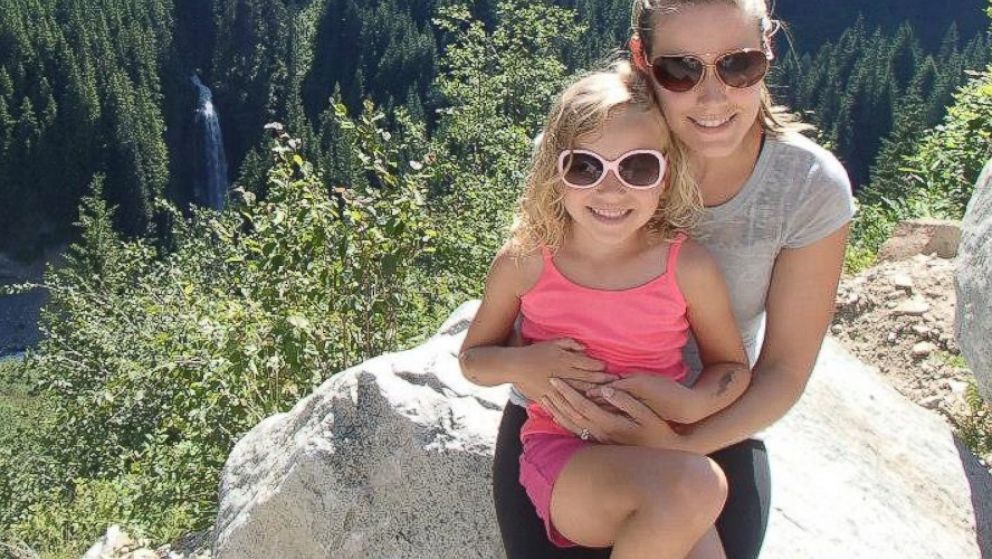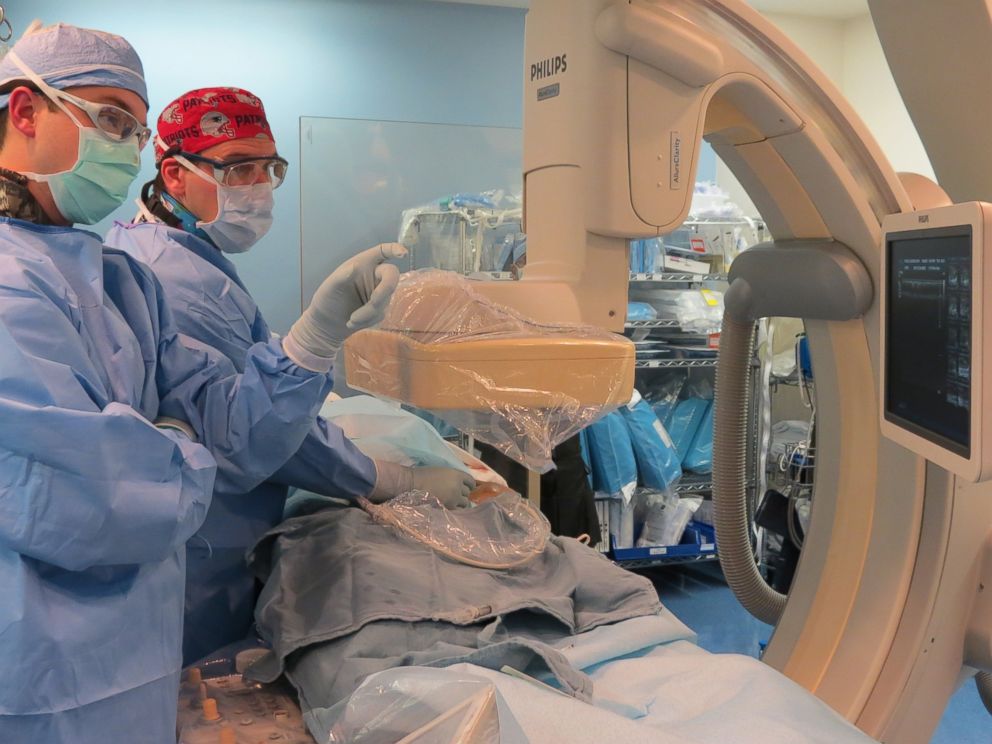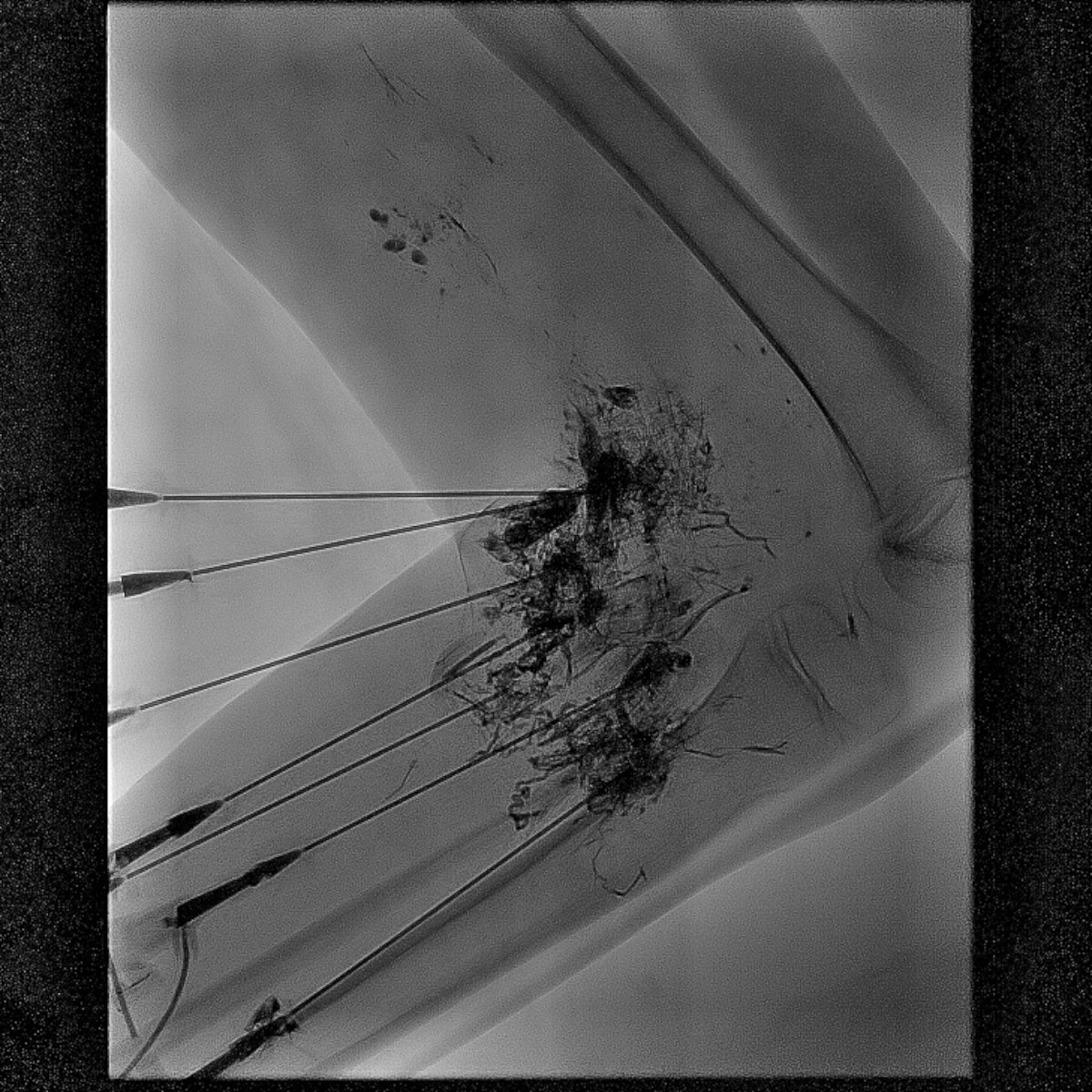'Superglue' Lets Girl Walk Without Pain for First Time in Years
Madison Fairchild was born with painful genetic malformation.

— -- When Madison Fairchild was just 3 years old, she started complaining about a "bruise" that would not go away.
Madison's mother, Kristen Fairchild, said that in spite of not finding a mark, they assumed the girl just had an injury they couldn't' see.
"Every time we bumped it she would scream or start crying," Fairchild recalled. "After a month of constantly complaining about why her leg hurt," we got her leg checked.
After an X-ray and MRI doctors found an abnormally large tangle of veins in her leg. The mass in her calf and thigh, called a venous malformation, had been there since birth, her doctors said.
"We’ve never heard of such a thing," Fairchild said, recalling that doctors told the family there was little they could do except treatments aimed at minimizing pain or temporarily diminishing the veins.
"Over the years, we tried pain management and [other] therapy. It would only work for a few weeks and she would go back to limping and complaining about the pain," Fairchild said.

The malformation is characterized by masses of blood vessels in the tissue and can cause immense pain. It usually isn't dangerous but the pain can cause patients to avoid activities as simple as walking, standing or running.
"For the first few years, she was able to move around, [but] she constantly skipped because she couldn’t bear a lot of weight on that front leg," Fairchild said. "She would always walk on her right toe because anytime she extended her leg it would cause those muscle to contact around the malformation and would cause pain."
Dr. Giridhar Shivaram, a radiologist at Seattle Children's Hospital, worked with Madison and said a common treatment made her pain even worse. Shivaram used what's called sclerotherapy, which uses a detergent-like substance injected into the veins to make them scar and hopefully diminish.
Shivaram explained they couldn't just remove the veins because there was a potential for excessive bleeding and their consistency makes it difficult to remove them.
"It’s like operating on wet tissue paper that bleeds," Shivaram explained. "Trying to excise that is difficult."
However, for Madison, the sclerotherapy treatment that she had in 2014 made the pain worse.
Her leg "contracted for the first time at a 90-degree angle and it seized up and she couldn’t straighten her leg at all," Fairchild said. "That was when we started having issues where it took over her life. She’d hop around a lot."
Doctors believe the veins cause pain because they are inflamed or because they are wrapped around nerves.
Madison could no longer keep her leg straight at all since the muscles had basically permanently contracted due to the malformation, her mom said. Around that same time, Dr. Jonathan Perkins, a pediatric otolaryngology physician at Seattle Children's Hospital, discussed a new experimental treatment in which medical-grade superglue could be injected into the veins so that they can be removed surgically.
"It allows us to remove affected tissue by sparing normal tissue around it," Perkins said of using glue to stiffen the veins and removing them the same day.

Shivaram and other doctors at Seattle Children's Hospital brought up the new kind of treatment with the family. Fairchild said they were concerned that the procedure could lead to bleeding, but were eventually reassured.
"Both [Madison's] Dad and I were ready to move forward with it," Fairchild said. "It was an opportunity to let our child be a child again."
The medical-grade superglue fills the veins so they are easy to remove. Doctors carefully map out the veins first to ensure the glue does not enter the bloodstream or vital organs. Madison had to undergo two procedures to remove the large malformations in her leg.
Her mother said the improvement was clear almost immediately.
"Four days later, she’s walking," Fairchild said. "It’s a totally different child. Her outlook is more positive."
Shivaram said there's little chance Madison will need any other procedures unless they missed some part of the malformation that becomes inflamed again. The hospital has done 50 procedures to help patients like Madison and only one has needed unexpected additional surgery to remove more of the malformation.
Fairchild said Madison still needs some rehabilitation to help her stretch out her nerves and strengthen her leg, but that she sees a major improvement in how her daughter is doing.
"She’s not afraid to run," Fairchild said. "She’s able to run with her friends now at recess."




